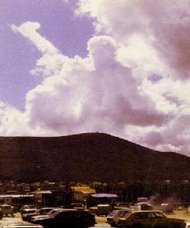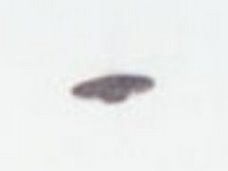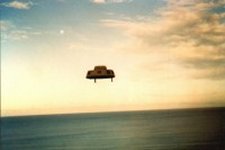
It is hardly surprising that many of Scotland's castles are associated with ghosts, apparitions and strange noises - they have histories in some cases stretching back over 600 years. Here is just a selection of twenty nine of them (from a list of 150 known to have a reputation!).
Culzean Castle, Ayrshire
There had been a castle here on the cliffs overlooking the Firth of Clyde long before Robert Adam designed his masterpiece for the Earl of Cassillis in the 18th century - incorporating some of the earlier castle which had been built by Sir Thomas Kennedy (who was murdered on the sands at Ayr in 1602). Whenever one of the Kennedy family is about to get married a ghostly piper is said to play in the grounds. He is also supposed to play on stormy nights - mixed in with the howling wind and crashing waves. There is also a a ghost of a young woman in a ballgown (reported as recently as 1972) but no-one seems to know who she is.
Ackergill Tower, Caithness
Ackergill Tower has had a stormy history over the last 600 years. At one time it was owned by the Keith family who had frequent fights with the Gunns and Sinclairs who came from the same part of the country. The castle is said to be haunted by the ghost of Helen Gunn who was kidnapped by one of the Keith family who brought her back to Ackergill Tower. She threw herself from the battlements of the tower rather than submit to her captors.
Balcomie Castle, Fife
Begun in the 16th century, the castle has had various owners and Mary of Guise stayed there on her way to marry King James V. At one time it had fine plaster ceilings but these were taken to Ayrshire to be incorporated into Dean Castle. The ghost in Balcomie Castle is reputed to be of a young man who was starved to death in the castle - because he would not stop whistling!
Baldoon Castle, Galloway
This castle is now a ruin but was owned by the Dunbars of Westfield from 1530 to 1800. Baldoon Castle's ghost became the subject of a novel by Sir Walter Scott - "The Bride of Lammermuir". Forced by her parents to abandon the man she loved, she married David Dunbar but became insane and stabbed him on her wedding night. Ever since those events in the 17th century, she is reputed to roam the castle dressed in white, blood-spattered clothes but is most often seen on the anniversary of her death.
Borthwick Castle, Lothian
Now advertised as a romantic place for a wedding, Borthwick Castle is a large, magnificent castle which was built in 1430. Mary Queen of Scots called at the castle after her marriage (at 4am on 15 May 1567) to the Earl of Bothwell. The castle was besieged and she only escaped by disguising herself as a man. Ever since then an apparition of Mary, dressed as a page boy, has been seen.
Brodick Castle, Isle of Arran
Much of the castle was created in the 19th century but incorporating parts which date back to the 13th century (though there may have been a Viking fort on the site even earlier than that). It was originally built by the Stewarts and was captured by the English during the Wars of Independence. In 1406 an English fleet sailed into the Clyde and destroyed much of the original castle. Considerable additions were made to the castle when Cromwell's forces occupied it in the middle of the 17th century. For much of its life the castle has been owned by members of the Hamilton family. The older part of the castle is said to be haunted by a "Grey Lady" who starved to death in the dungeons of the castle because she had the plague. A man has been reportedly seen sitting in the library and a White Deer is reputedly seen in the grounds of the castle whenever a chief of the Hamiltons is close to death.
Cawdor Castle
Regarded as one of the most magnificent castles in Scotland, parts of Cawdor date back to the 14th century. It is said to have been built where William Calder had been told in a dream to build a castle wherever his donkey stopped to rest. Although associated by Shakespeare with Macbeth, the castle is not quite old enough (King Duncan was not murdered at Cawdor but in battle at nearby Spynie). The castle became part of the Campbell "empire" when Muriel Calder, heiress to the castle, was kidnapped at the age of 12 and married to the Earl of Argyll's son, Sir John Campbell in 1511. A ghost wearing a blue velvet dress has been reported in the castle though no-one can say whether this is Muriel Calder.
Claypotts Castle, Angus
The oddly shaped Claypotts Castle (two of its round towers have projecting rectangular rooms at the top) dates from the 16th century. At one time the castle was owned by John Graham of Claverhouse, known as "Bonnie Dundee" or "Bloody Clavers" depending on which side you were on during the time of the Covenanters. The castle is said to be haunted by a "White Lady" who is seen at a window in the castle each 29 May. She is reputed to be the ghost of Marion Ogilvie who was the mistress of Cardinal Beaton who was murdered in St Andrews - on 29 May 1546. However the castle had not been built by 1546 and she lived at Melglund Castle.
Craigievar Castle, Aberdeenshire
Seven-storeys high, Craigievar Castle was owned initially by the Mortimer family and then the Forbes who completed the castle in 1626. It is now owned by the National Trust for Scotland and is said to be haunted by a member of the Gordon family who was murdered there by Sir John Forbes who forced him out of a high window at sword point. There is also said to be a fiddler - who is only ever seen by members of the Forbes family.
Craignethan Castle, Lanark
On an easily defensible position on a promontory overlooking the River Nethan, a tributary of the Clyde, Craignethan Castle had formidable defences - which were never put to the test. Originally owned by the Black Douglases it passed to the Hamiltons. Mary Queen of Scots is said to have spent the night there before the Battle of Langside and the castle is said to be haunted by her (minus her head, which was removed at her execution!). Other apparitions have been seen in the courtyard of the castle. In recent times, visitors to the castle have followed a a figure dressed in historical costume, thinking it was leading the way to a pageant - only to find the figure disappearing before their eyes....
Dean Castle, Ayrshire
This well preserved castle incorporates a keep which goes back to the 14th century. For much of its life it was occupied by the Boyd family. It was gutted by fire in 1735 but in 1905 it was restored - using material from Balcomie Castle (see above). It was subsequently given to the town of Kilmarnock in 1975 and the grounds are a public park. Prior to the Jacobite uprising, servants in the castle said they had seen a severed head rolling on the floor. The fourth Earl Boyd later joined the rising - and was beheaded in 1746.
Delgatie Castle, Turriff
Rising five storeys high, Delgatie Castle was the property of the Clan Hay who had a well-earned reputation for their fighting qualities. But the Clan supported the Jacobites in both 1715 and 1745 and forfeited the castle as a result. The castle is reputed to be haunted by a red haired woman and during the Second World War an entire detachment of troops who were billeted there fled from the castle in bare feet as they were confronted by the ghostly apparition.
Dunrobin Castle, Sutherland
The name Sutherland is derived from the Norse "south lands" and was adopted by a Fleming who arrived there before the 13th century. The masive and stately Dunrobin Castle, latterly made to look like a French chateau, was the home of the Sutherland family for centuries. The family became infamous for their part in the Highland Clearances during which many local crofters were forcibly evicted so that the land could be used more profitably rearing sheep. The ghost which haunts the upper floors of the castle is reputed to be the daughter of the 14th Earl of Sutherland who was imprisoned by her father to stop her from marrying someone he regarded as unsuitable. She tried to escape down a rope from an upstairs room but fell to her death.
Duns Castle, Berwickshire
Parts of this castle in the Scottish Borders go back to the 14th century. The castle has had many owners but its association with the Hay family has resulted in a ghost being reported. Alexander Hay was killed at the Battle of Waterloo in 1815 and is said to have returned to Duns Castle and makes a ghostly appearance every now and then.
Dunstaffnage Castle, Oban
According to legend there has been a fort on this promontory since the first century BC. As a Dalriada stronghold the Stone of Destiny was held there at one stage. The present castle dates from the 13th century and early in the 15th century it became one of the (many) strongholds of the Clan Campbell. Punitive raids against the MacDonalds and the Macleans were mounted from here and in the 16th century Cameron of Lochiel was beheaded there. Flora MacDonald was imprisoned in the castle for a short spell after she had helped Prince Charles Edward Stewart to escape back to France in 1746. The castle's ghost is said to wear a green dress and foretells major events, both good or bad, which are about to befall the Campbell nobility.
Dunvegan Castle, Isle of Skye
Dunvegan has been the home of the chiefs of the Clan MacLeod since 1270. It is also the home of the Fairy Flag which was given to a MacLeod chief by his fairy wife. It is used to give victory to the clan and achieved this at battles at Glendale and Trumpan and the faded flag is said to be available if required in the future!
Edinburgh Castle
On a prominent position on top of a former volcano, there has undoubtedly been a fortress there since long before recorded history. The castle has been at the centre of Scottish history for over 800 years and was captured and recaptured many times during the centuries of wars between Scotland and England. Mary Queen of Scots gave birth to the future King James VI in the castle in 1566. The castle withstood attack in both the 1715 and 1745 Jacobite Uprisings. The castle is said to have a ghost of a headless drummer (who was sighted as recently as 1960) and a piper playing on the battlements - and not just during the Edinburgh Military Tattoo...
Fernie Castle, Fife
Originally owned by the MacDuffs it passed to the Fernies in the 15th century but in recent times it has become a hotel. Its "Green Lady" ghost is said to have fallen to her death from the tower of the castle many centuries ago but she has kept up with the times and now shows that she is around by tampering with the lights and electrical appliances, giving a ready-made excuse for the hotel when the TV goes blank.
Castle Fraser, Aberdeenshire
Held by the Frasers since the 15th century, the castle is now owned by the National Trust for Scotland. While there are no reported ghosts in the castle, in the 19th century a young woman was murdered in the castle and her body dragged down the stairs. It was said that the stains on the stone stairs kept reappearing, despite strenuous efforts by the servants. The stair is now covered in wood.
Fyvie Castle, Aberdeenshire
Dating back to the 13th century, Fyvie Castle is highly decorated with towers and dormer windows. It has been owned by a number of wealthy families over the years - Lindsay, Preston, Meldrum, Seton, Gordon, Leith, many of whom left their mark on the building. It is said to be haunted by several ghosts including a "Grey Lady". When building work was being carried out in the early part of this century a skeleton was found in a secret room. The Grey Lady was seen frequently thereafter - until the bones were returned to the room when things quietened down again. Another ghost, a "Green Lady" is said to be Dame Lillias Drummond who was starved to death by her husband, Sir Alexander Seton, who then remarried soon after. The ghost is said to have scratched her name on the window sill of the bedroom being used by the newlyweds - and the name can still be seen there.
Glamis Castle
Glamis has a reputation for being one of the most haunted castles in Scotland - and that is saying something! With its pointed turrets it looks more like a Disney creation than a Scottish castle. It was home to Queen Elizabeth, the mother of the present Queen. Princess Margaret, the Queen's sister was born in Glamis. Earlier in its history, however, the young and beautiful Lady Glamis was accused by King James V of being a witch and was burned at the stake in 1537. Her ghost is the "Grey Lady of Glamis". Another ghost is said to be the 4th Earl of Crawford who haunts a room where he played cards with the devil. The large bearded ghost of "Earl Beardie" is also said to have been seen on many occasions.
Castle Grant, Grantown-on-Spey
The stronghold of the Grants, a name which may have come from the Norman French "grand" meaning "great". The ghost is said to appear of Lady Barbara Grant, a daughter of a 16th century laird, who died while locked in a cupboard because she fell in love with someone deemed unsuitable by her father.
Castle Guthrie, Angus
Castle Guthrie is now a hotel and visitors can stay overnight in the "Ghost Suite". It obtained its reputation after a visit by the Bishop of St Andrews in 1620. While he was there a ghost of a former Lady Guthrie came back to make sure he was comfortable. Since then she has returned to look after whoever is sleeping there -and guests in the hotel say it has been the most peaceful sleep they have ever experienced.....
Hermitage Castle, Borders
Parts of Hermitage Castle go back to the 13th century when the castle was built for the Dacres family but eventually became one of the Douglas castles and then the Earl of Bothwell. The 4th Earl of Bothwell was visited at Hermitage by Mary Queen of Scots who later married him. Needless to say, Mary's ghost has been seen in the castle but the ghostly screams which are said to be heard from time to time are attributed to an earlier owner who dabbled in witchcraft.
Huntingtower Castle, Perthshire
The land here was held by the Ruthven family from the 12th century and Huntingtower Castle used to be called Ruthven Castle. Mary Queen of Scots visited the castle soon after her marriage to Lord Darnley and the 4th Lord Ruthven kidnapped the 15-year-old King James VI and held him in the castle for a year. The castle ghost is named "My Lady Greensleeves" and although she is sometimes seen in advance of a death, she is also said to have cured sick people, an unusual ocurence for a ghost.
Inveraray Castle
A Campbell stronghold, the original castle was burnt by the Marquis of Montrose in 1644. The present castle was built by the 3rd Duke of Argyle as he rebuilt not only the castle but the town of Inveraray as well. The castle is reputed to have a number of ghosts ranging from a harpist who was killed during the attack by Montrose, another which appears when a Campbell chief is close to death and a young woman who was murdered by Jacobites.
Lordscairnie Castle, Fife
Little remains of the original keep and tower of the 15/16th century building which was built for the Earls of Crawford. The loch which used to surround the castle has been drained and it is said that treasure is buried nearby. The 4th Earl of Crawford is said to be seen playing cards with the devil at midnight each New Year's Eve.
Neidpath Castle, Peebles
Parts of the castle date from the 14th century but there have been many additions and alterations over the centuries. Owned originally by the Hay family, Mary Queen of Scots stayed there in 1563 and her son, King Kames VI, visited in 1587. The castle was beseiged by Cromwell in 1650. In more recent times, the castle was used during filming of "The Bruce". The castle's ghost is yet another girl whose father would not allow her to marry her lover and she died of a broken heart.
Castle of Park, Banff
This castle incorporates a 16th century tower house and a green lady is said to appear from an upstairs window. The story goes that she is a servant who was dismissed from her post because she was expecing a child and subsequently committed suicide. Yet another ghost in the castle is a monk who was reputedly murdered by being walled up in the castle. Residents say they feel as though they are being watched - and objects mysteriously move from one room to another but it is the former servant, the green lady who is given the blame for this!















